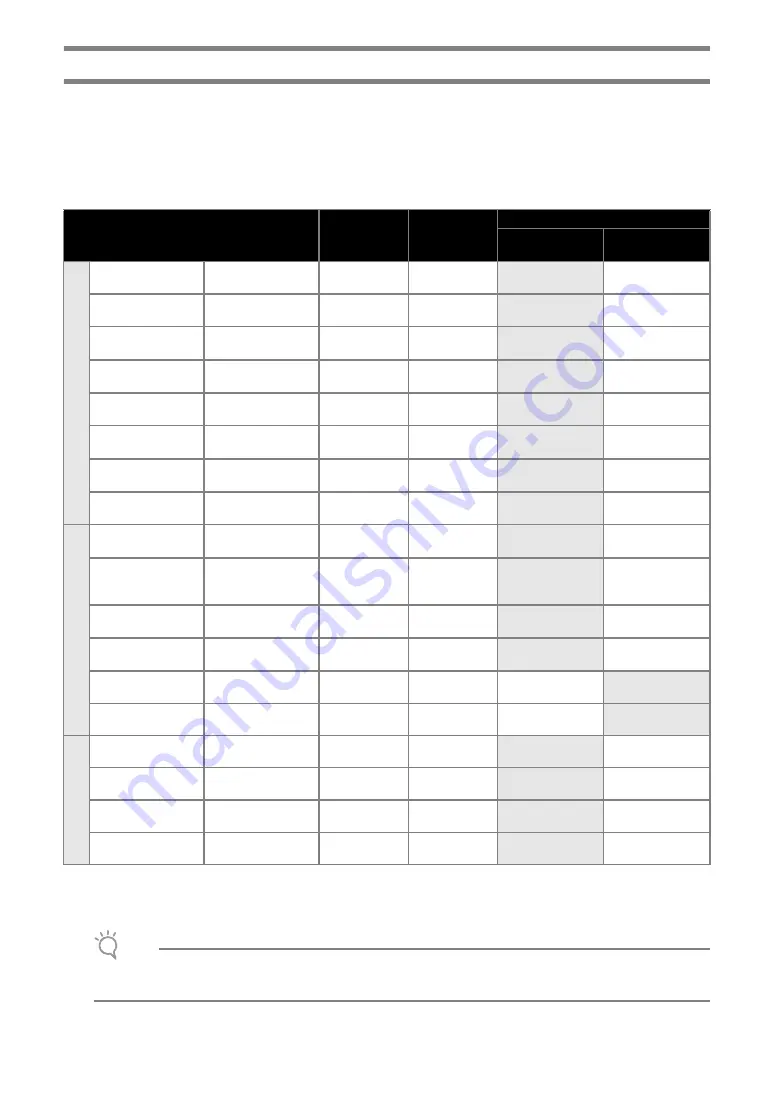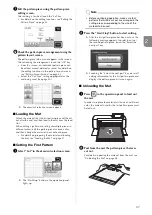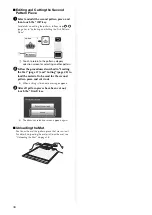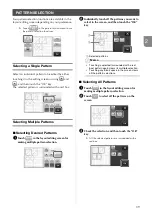
24
Adjusting the Blade Extension
The appropriate blade extension differs depending on the material type and thickness. Before installing the
holder in the carriage, turn the holder cap to adjust the blade extension, and then perform trial cutting. For
details on trial cutting, see “Trial Cutting” on page 27.
■
Cutting Settings
Use the following table to select the appropriate settings according to the material that will be cut.
*
Adjust the setting for “Cut Pressure” in the settings screen (page 30).
*
Use a high tack adhesive fabric support sheet or a iron-on fabric appliqué contact sheet when you cut a piece of
fabric out. For details, see “Mat and Material Combinations” on page 16.
Note
•
The settings indicated in the table are approximations. The setting will differ depending on the type and
thickness of the material to be cut. Be sure to perform a trial cutting first.
Material and its thickness
Blade scale
setting
Cut pressure
setting
Cutting blade
Standard cut blade
(turquoise)
Deep cut blade
(purple)
Pap
e
r
Printer paper
80 g/m² (0.1 mm)
3
-1
3
Scrapbook paper
(thin)
120 g/m²
(0.15 mm)
3.5
0
3
Scrapbook paper
(medium-thick)
200 g/m²
(0.25 mm)
4
0
3
Cardstock (thin)
200 g/m²
(0.25 mm)
4
0
3
Cardstock (medium-
thick)
280 g/m²
(0.35 mm)
5
0
3
Vellum, tracing
paper
0.07 mm
3
0
3
Poster board (thin)
280 g/m²
(0.35 mm)
5.5
0
3
Poster board (thick)
400 g/m²
(0.5 mm)
7.5
4
3
Fabric
Thin cotton fabric
(for quilt piece)
0.25 mm
4
4
3
Thin cotton fabric
(except for quilt
piece)
0.25 mm
4
4
3
Flannel (for quilt
piece)
0.6 mm
6.5
4
3
Flannel (except for
quilt piece)
0.6 mm
6.5
4
3
Felt
1 mm
5
5
3
Denim 14 oz
0.75 mm
5.5
6
3
Ot
he
rs
Plastic sheet (PP)
0.2 mm
4
0
3
Vinyl
0.2 mm
4
0
3
Magnet
0.3 mm
5.5
0
3
Sticker or seal
0.2 mm
4
0
3
















































